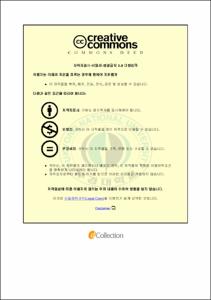Biodegradation of shrimp-shell waste for reutilization
- Abstract
- Chitin-degrading bacterial strains were screened and examined for their shrimp-shell waste degrading ability. Two strains isolated from tidal mud and shrimp pond bottom soil, and identified as Bacillus cereus TM2 and B. cereus SPS3, respectively and two lab-stored strains, B. cereus EW5 and B. subtilis KA1, were determined to be useful chitin-degrading strains. Strain EW5 exhibited the highest chitin-degrading ability compared with other strains and produced 24 mg of reducing sugar per gram of dry shrimp-shell waste after 4 days of incubation. A TLC analysis of shrimp-shell waste biodegradation revealed that the chitosaccharides produced in the culture supernatant were primarily N-Acetylglucosamine (GlcNAc) and chitobiose. The culture supernatant exhibited a high degree of antioxidant activity, as indicated by 83% DPPH, 99.6% ABTS, 51% hydroxyl radical scavenging activity and 0.34 reducing power. The formation of GlcNAc and chitobiose during biodegradation of shrimp-shell waste is considered to be the major contributor to the antioxidant activity. The EW5 culture supernatant also exhibited the DNA protective activity. This report represents the first description of fermented production of GlcNAc and DNA protective activity of the culture supernatant from shrimp-shell waste by B. cereus. This will not only enhance the reutilization value of shrimp-shell waste but also solve the environmental pollution problem.
- Issued Date
- 2014
- Awarded Date
- 2014. 2
- Type
- Dissertation
- Publisher
- 부경대학교
- Affiliation
- 글로벌수산대학원
- Department
- 글로벌수산대학원 국제수산과학협동과정
- Advisor
- 김중균
- Table Of Contents
- Table of Contents i
List of Figures iv
List of Tables vi
Abstract vii
1. Introduction 1
2. Materials and Methods 10
2.1. Preparation of the shrimp-shell powder (SSP) 10
2.2. Pretreatment of the SSP 10
2.3. Isolation and screening of chitin-degrading strains 11
2.3.1. Chitinase activity test 12
2.3.2. Measurement of reducing sugar 12
2.3.3. Test of synergistic ability of selected strains 15
2.4. Identification of isolated useful strains 15
2.5. Biodegradation of shrimp-shell waste 17
2.6. Product analysis by thin layer chromatography 18
2.7. Determination of antioxidant activity 18
2.7.1. DPPH radical scavenging assay 18
2.7.2. ABTS radical cation decolorization assay 19
2.7.3. Reducing power assay 20
2.7.4. Hydroxyl radical scavenging assay 21
2.8. Determination of DNA protective activity 22
3. Results 23
3.1. Screening of chitin-degrading strains 23
3.1.1. Chitinase activity 23
3.1.2. Production of reducing sugar 24
3.1.3. Synergistic ability of selected strains 24
3.2. Identification and characterization of useful 29
3.3. Biodegradation of shrimp-shell waste 42
3.4. Production of chitosaccharides 42
3.5. Antioxidant activity of biodegraded shrimp-shell waste 45
3.5.1. DPPH free radical scavenging activity 45
3.5.2. ABTS radical cation decolorization assay 48
3.5.3. Reducing power 48
3.5.4. Hydroxyl radical scavenging activity 53
3.6. Protective effect against DNA damage 53
4. Discussion 56
4.1. Identification and characterization of useful 56
4.2. Shrimp-shell waste degradation ability of screened strains 56
4.3. Kinetics of shrimp-shell waste biodegradation 57
4.4. Antioxidant activity 59
4.5. DNA protective activity of EW5 65
5. Conclusions 67
Acknowledgements 68
References 70
- Degree
- Master
- Appears in Collections:
- 글로벌수산대학원 > 국제수산과학협동과정
- Files in This Item:
-
-
Download
 Biodegradation of shrimp-shell waste for reutilization.pdf
기타 데이터 / 3.35 MB / Adobe PDF
Biodegradation of shrimp-shell waste for reutilization.pdf
기타 데이터 / 3.35 MB / Adobe PDF
-
Items in Repository are protected by copyright, with all rights reserved, unless otherwise indicated.